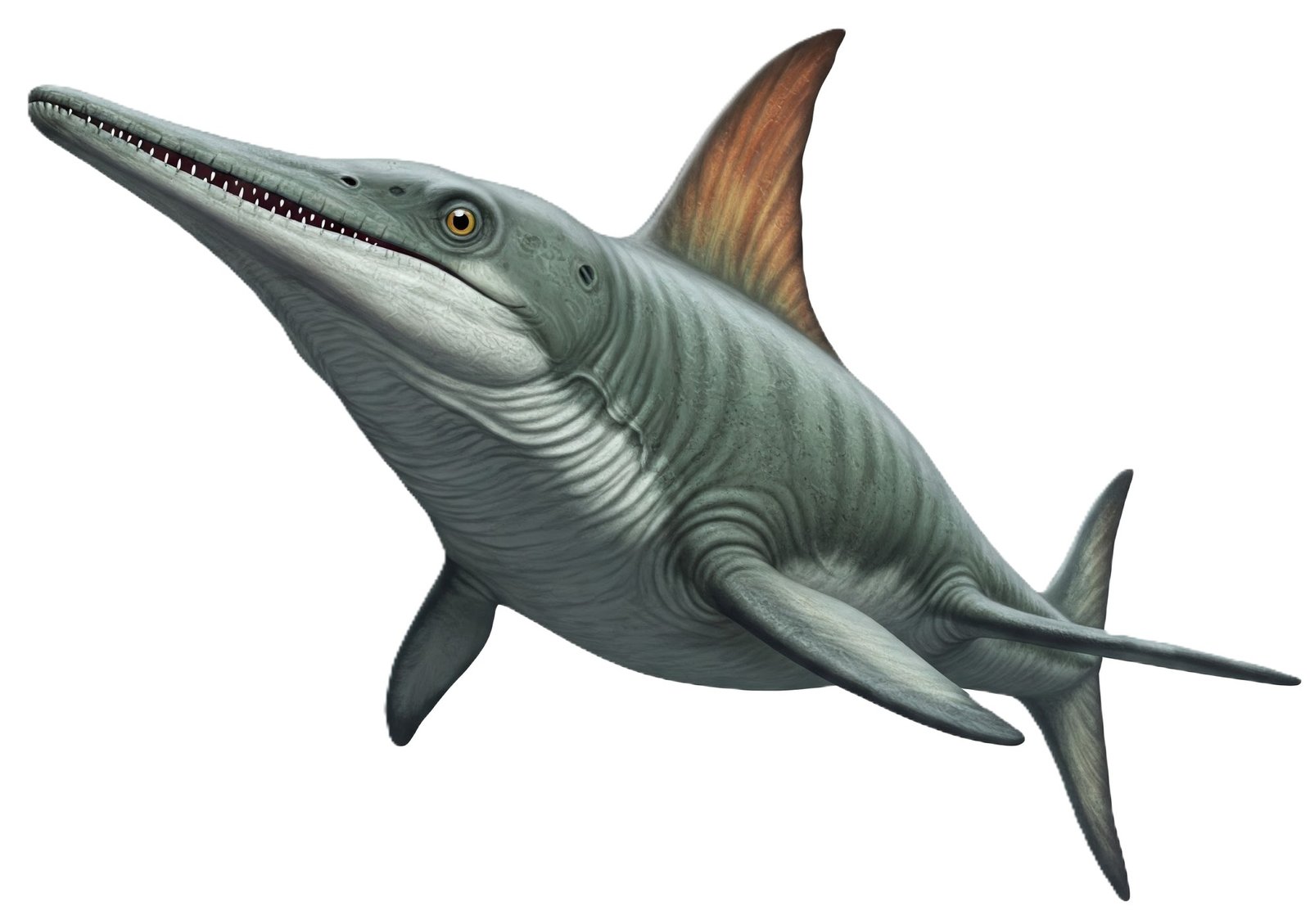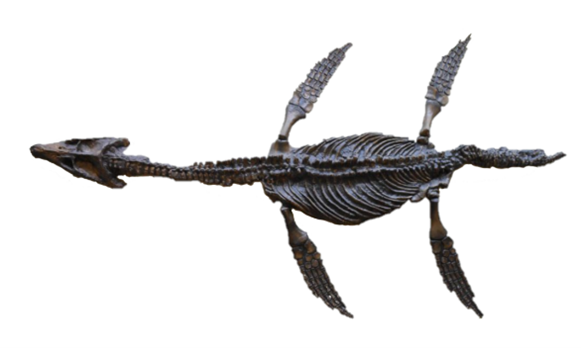
Ichthyosaur, meaning “fish lizards,” were a fascinating group of marine reptiles that thrived during the Mesozoic Era. Emerging in the Early Triassic period, not long after the Permian-Triassic mass extinction, they rapidly evolved to fill newly available marine niches. Their evolutionary journey, which spanned nearly 150 million years, showcases a remarkable case of convergent evolution as their streamlined bodies and lifestyle bore a striking resemblance to modern dolphins, despite being only distantly related.
Physical Characteristics and Adaptations
These marine reptiles were built for speed and agility. Their elongated, streamlined bodies combined with paddle-like limbs allowed for efficient, sustained swimming in the prehistoric oceans. Many ichthyosaurs sported vertically oriented tail fins that provided powerful thrust, enabling them to become swift hunters. One of the most striking features of many species was their large, forward-facing eyes, which indicate an adaptation for excellent vision—likely essential for spotting prey in dim underwater environments. Their elongated skulls housed sharp, conical teeth ideally suited for capturing slippery prey such as fish and squid, and variations in dental structure suggest that different species might have adopted varied feeding strategies over time.
Fossil Discoveries and Distribution
Fossil discoveries of ichthyosaurs have been made on every continent, underscoring their widespread distribution and adaptability to a range of marine habitats—from shallow seas to deep marine environments. Their remains, found in sedimentary rocks, reflect a life spent entirely in water, where they occupied apex predator roles. Evidence from stomach contents and wear on teeth confirms that many ichthyosaurs primarily fed on fish and cephalopods, while larger species may have preyed on other marine reptiles.
Mary Anning and the First Ichthyosaur Discovery
One of the most significant figures in the study of ichthyosaurs was Mary Anning (https://siansemporium.com/mary-anning/), a pioneering fossil hunter from Lyme Regis, England. In 1811, at just 12 years old, she and her brother Joseph discovered the first complete ichthyosaur skeleton along the Jurassic Coast. This groundbreaking find provided scientists with the first clear evidence of these ancient marine reptiles and sparked widespread interest in palaeontology. Anning went on to make several other important discoveries, including additional ichthyosaur specimens, plesiosaurs, and even the first correctly identified pterosaur found outside Germany. Despite being largely unrecognised by the scientific community during her lifetime due to her gender and social class, her contributions to palaeontology were instrumental in shaping our understanding of prehistoric life. Today, she is celebrated as one of the most important figures in early fossil studies.

Reproduction and Social Behaviour
A notable aspect of ichthyosaur biology was their reproductive strategy. Unlike most modern reptiles, ichthyosaurs are believed to have been viviparous, giving birth to live young—a trait supported by fossils of pregnant individuals complete with embryos. This adaptation would have been particularly advantageous in an entirely aquatic environment, as it eliminated the need for a terrestrial nesting site. Although direct evidence of social behaviour is limited, the discovery of multiple specimens together suggests that some species may have exhibited social or herding tendencies, which could have played a role in hunting strategies or migration patterns.
Decline and Extinction
The decline of ichthyosaurs began during the Late Cretaceous period, and their eventual extinction remains a subject of debate among paleontologists. Climatic changes, competition from emerging marine predators such as mosasaurs, and disruptions in their food chains may all have contributed to their downfall. Despite their extinction, ichthyosaurs have left behind a rich fossil record that continues to provide valuable insights into Mesozoic marine ecosystems and the processes of evolution and adaptation following mass extinction events.
Modern Research and Legacy
Ongoing research and recent fossil discoveries have further illuminated the diversity and biology of ichthyosaurs. Advanced imaging techniques and detailed stratigraphic analyses are continually refining our understanding of their lifeways, reaffirming their status as a key group in the history of marine life. These studies not only enhance our comprehension of ichthyosaurs but also contribute to a broader understanding of how life on Earth evolves and adapts in the face of dramatic environmental changes. Mary Anning’s discoveries continue to inspire scientists and fossil hunters today, and her legacy is honoured in museums, books, and even through the naming of the species Ichthyosaurus anningae.
